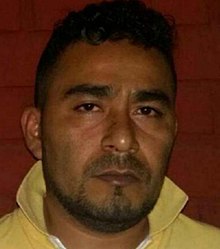Yulan Adonay Archaga Carías is a Honduran fugitive, drug lord, and a suspected leader of the MS-13 gang in Honduras.
He was added to the FBI Ten Most Wanted Fugitives list on November 3, 2021 and is wanted for racketeering, narcotics trafficking, and firearms offenses.
Archaga Carias is allegedly in charge of MS-13 for all of Honduras and is believed to be providing firearms, narcotics, and cash to gang members who are operating within the United States.
He is also believed to be responsible for ordering the murders of rival gang members.
Authorities believe he is still in Honduras.
Is Yulan Adonay Archaga Carías married?
There is no publicly available information about Yulan Adonay Archaga Carías’s marital status.
Some sources claim that he is married, while others claim that he is single. However, there is no concrete evidence to support either claim.
Given his criminal lifestyle and the fact that he is a fugitive, it is likely that Archaga Carias would keep his personal life very private.
Therefore, it is unlikely that the public will ever know for sure whether he is married or not.
Conviction in Honduras and escape
Arrested in 2015, Archaga Carías was imprisoned in Honduras after being convicted of money laundering and illicit association.
On February 13, 2020, Archaga Carías left prison to attend a court hearing in the city of El Progreso, some 28 kilometers from San Pedro Sula.
He was transported by van, not by helicopter, as was the norm.
Barely any security guards accompanied him, and the military police were not given prior notice, as protocol dictates when such a high-profile inmate is in on the move.
Upon arriving at the courthouse in the city of El Progreso, northern Honduras, an MS13 squad barged in and helped him escape in a hail of bullets.
Security footage shows two groups of men dressed in military police uniforms arriving on the scene. The first group was escorting a man in handcuffs, a false prisoner used as a decoy.
The second was escorting a man dressed in a black tunic that is generally used to protect the identity of a witness or victim.
This time, it was used to hide weapons and ammunition



